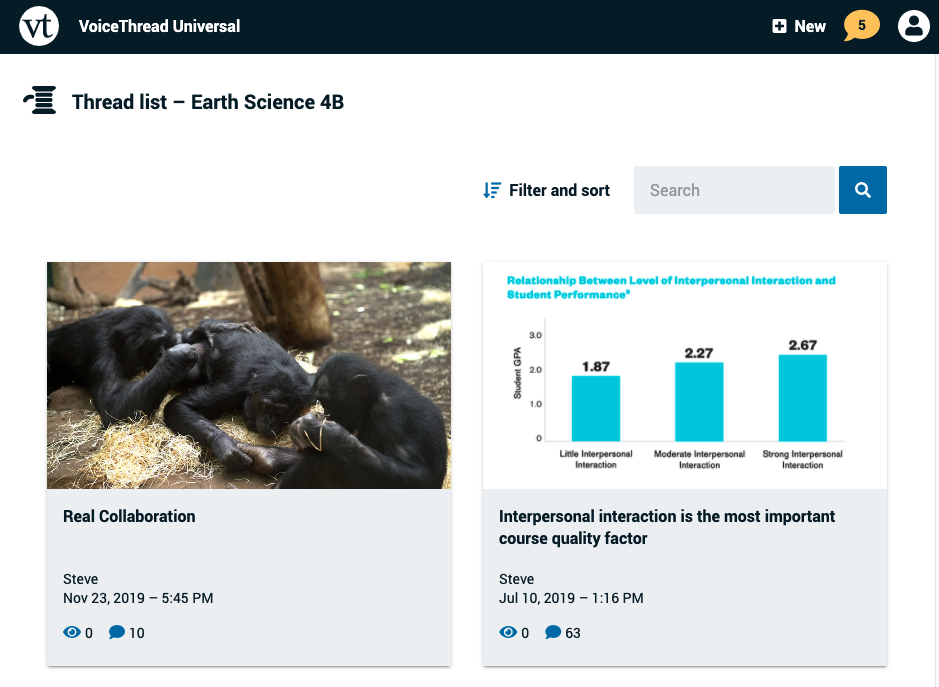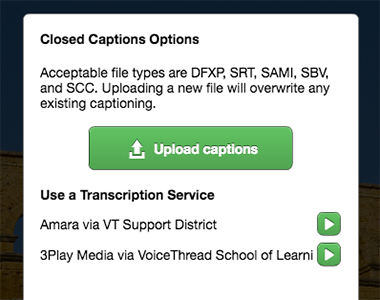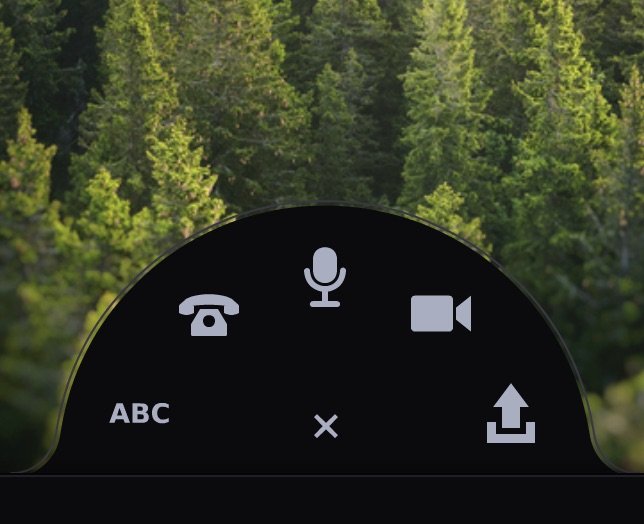At VoiceThread, we believe universal accessibility means more than just saying we meet a few guidelines in Section 508 of the US Rehabilitation Act. We want to make our software usable by all people. Section 508 does a good job of encouraging that, but we want to go one step further and make it straightforward and pleasant for everyone.
We want to serve the needs of a person with dyslexia or ADHD, an outdoor classroom with mobile devices, a user in the developing world without high-speed internet, a kindergartner, or an elderly lifelong learner. In our experience, the only way to do this is by thoughtful and sensitive design, with lots of input from our differently-abled users, and that's something that can't be contained in any number of check-boxes.

VOICETHREAD UNIVERSAL
An application designed for people who use a screen reader to access content on the web. VT Universal can be set as a user's default method of interacting with VoiceThread conversations. It’s a version of VoiceThread designed to be heard rather than seen.

CLOSED CAPTIONING
Closed captions can be added to any media that contains an audio component, whether that's a comment or a slide. Captions can be uploaded manually, provided through an integration with a professional third party service, or generated automatically using VoiceThread's Automatic Caption Service if your institution subscribes to the Platinum Service Tier.

A RICH SET OF PARTICIPATORY METHODS
VoiceThread's 5 methods of commenting and diverse set of media options make it the most broadly usable communications platform in the world. Users who are deaf or hard of hearing, are vision impaired, have ADD, ADHD, or dyslexia, or have any other physical and cognitive differences can participate using a recipe that they make themselves. The principles of Universal Design for Learning underpin the entire platform.
Download a copy of VoiceThread's Voluntary Product Accessibility Template (VPAT).
Watch a recorded webinar on VoiceThread and Universal Design for Learning.